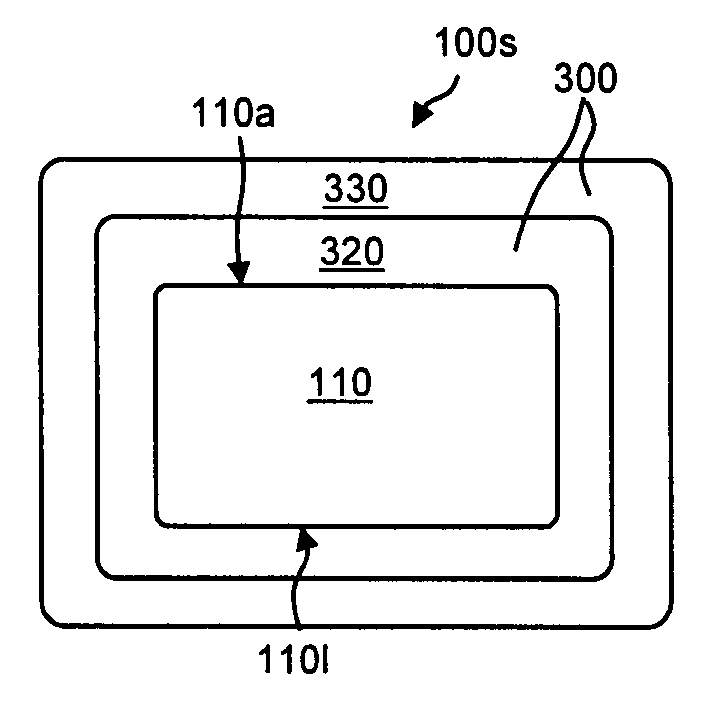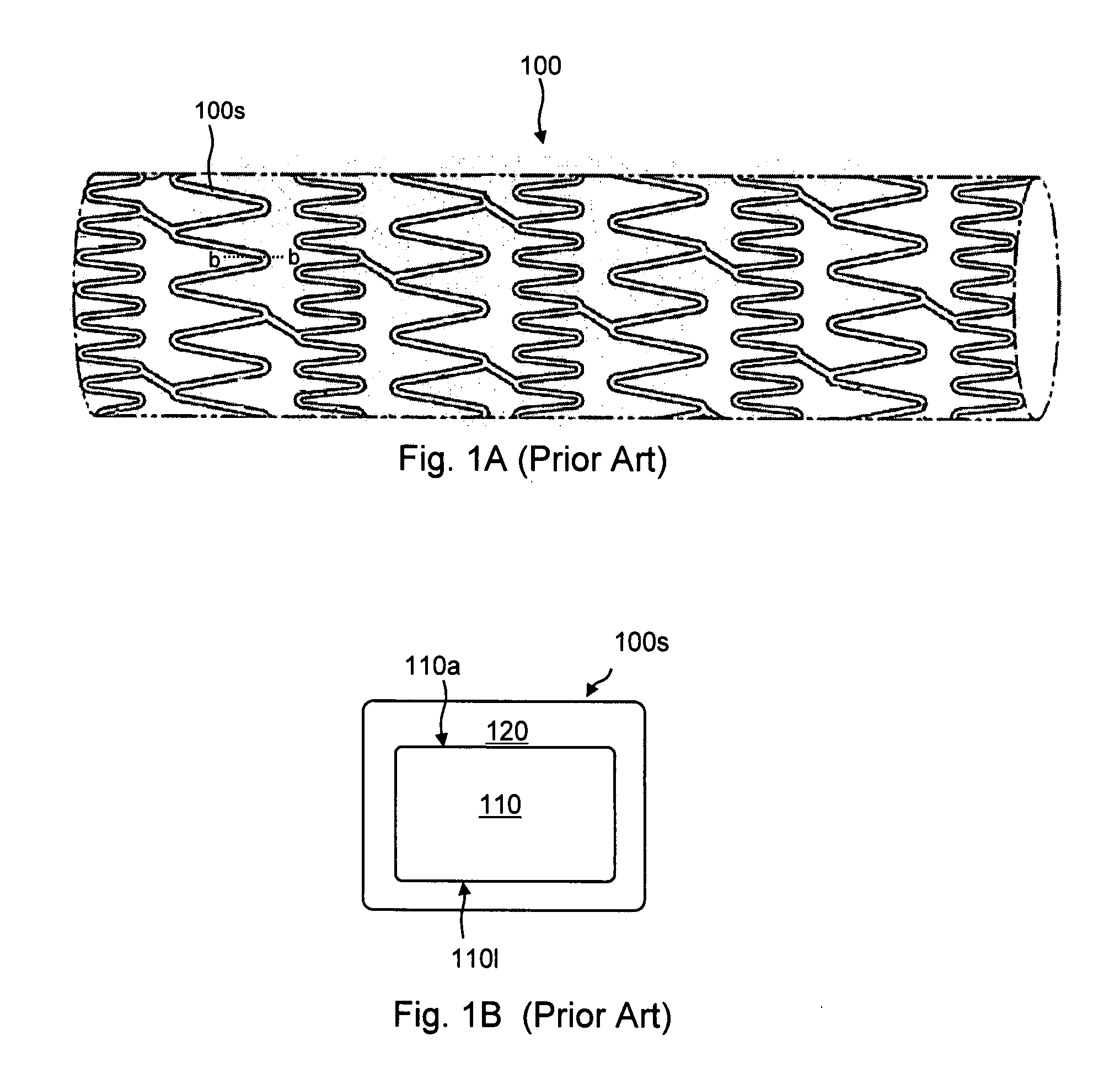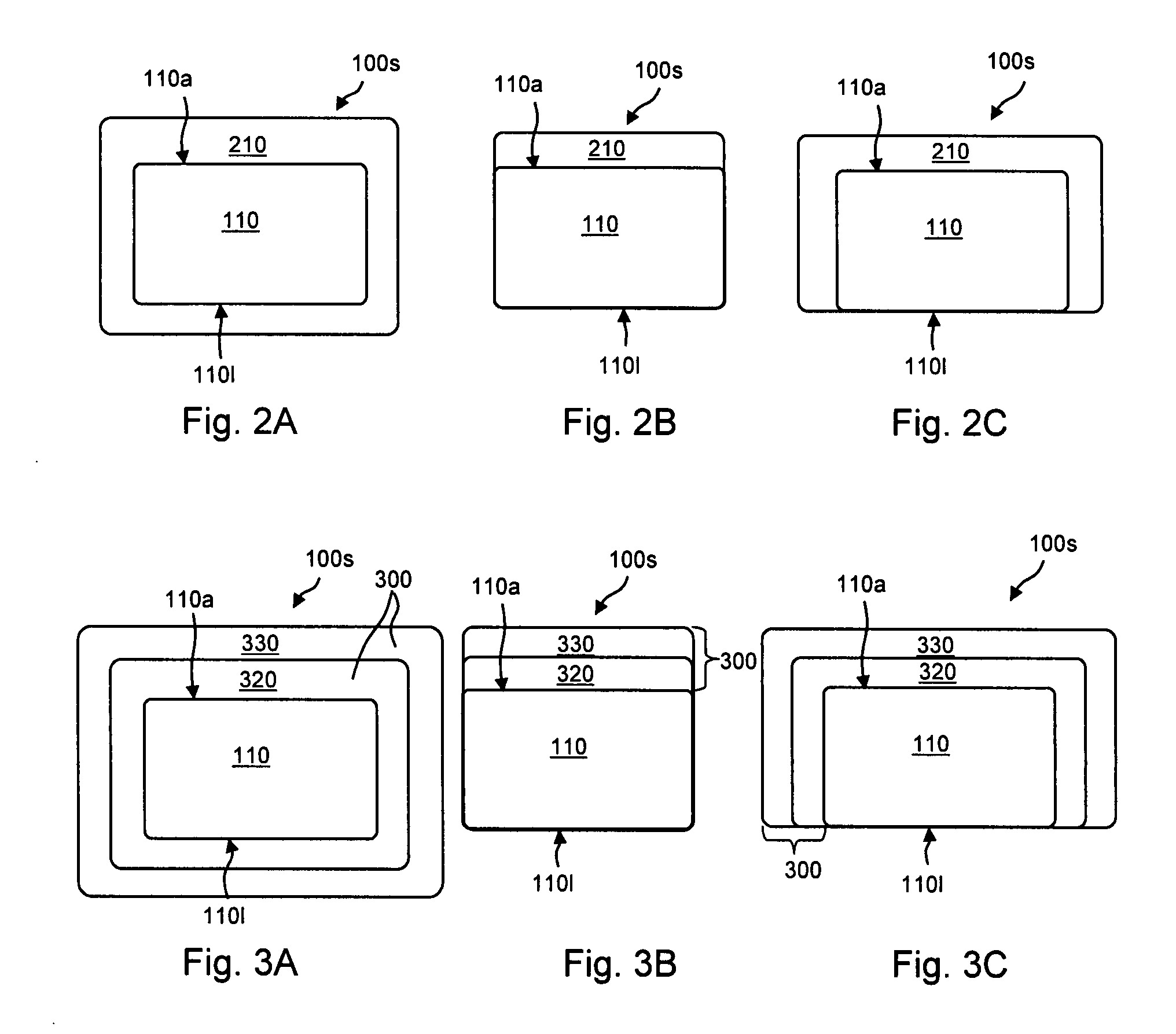Medical devices having coating with improved adhesion
a technology of adhesion and medical devices, which is applied in the field of medical devices, can solve the problems of poor adhesion of coating to drug may not be equally desirable on the luminal surface of the stent, and may affect the growth of healthy endothelial cells, so as to achieve the effect of improving adhesion to the metallic substra
- Summary
- Abstract
- Description
- Claims
- Application Information
AI Technical Summary
Benefits of technology
Problems solved by technology
Method used
Image
Examples
example 1
[0081]Poly(methyl methacrylate-b-butyl acrylate-b-methyl methacrylate) triblock copolymer (MBAM) is desirable from a drug release standpoint as it undergoes essentially 100% release of therapeutic agent in vivo, even of highly hydrophobic agents such as paclitaxel. Also, because the copolymer contains two hard blocks interconnected by a soft elastic block, reversible physical crosslinks are typically formed during processing, resulting in a copolymer with good strength. Moreover, because MBAM is a copolymer, one can tailor the drug release and mechanical properties of the copolymer by varying the ratio of methyl methacrylate (MMA) to butyl acrylate (BA) within the polymer, among other variations (e.g., variations in architecture, molecular weight, etc.). For example, with respect to mechanical properties, MMA is brittle, whereas BA is tacky, allowing the relative proportions of these monomers to be adjusted to achieve a non-brittle, non-sticky copolymer.
[0082]As noted above, for vas...
example 2
[0085]This example comprises an approach in which the adhesion promoting polymer is deposited in a separate layer from the block copolymer layer. A 10% wt % solution in THF of each acrylic adhesion promoter of Example 1 was knife coated onto stainless steel foil and dried at 70° C. Thickness of the resulting adhesion promoting layer was <1 μm. 25% wt % MBAM (42 wt % BA content) in THF was coated over the adhesion promoting layer via a knife coating technique and dried at 70° C. for 1 hr. The MBAM was purchased from Arkema, Inc., Philadelphia, Pa., USA. The dry coating thickness was about 60 μm.
[0086]Adhesion was determined by peeling the MBAM coating from the foil (180° peel angle) utilizing a tensile tester. The MBAM layer is coated beyond the adhesion promoting layer so that part of the MBAM coating is directly disposed on the stainless steel. This allows one to readily start the peel process from the stainless steel. During the peel test, the peel front eventually reaches the adh...
example 3
[0088]This example comprises an approach in which the adhesion promoting polymer is blended in a single layer with the block copolymer layer. Each acrylic acid adhesion promoting copolymer of Example 1 was blended with MBAM at 10 wt % and 20 wt % adhesion promoting copolymer loading. Coatings were cast at 25% wt % solids, dried and peel tested as described in the previous Example 2. The results are presented in Table 2.
TABLE 2AdhesionWetWetPromotingDryadhesionadhesionCopolymerMBAM / CopolymerAdhesion(4 day)(30 day)(MMA / BA / AA)Ratio (wt / wt)(g / in)(g / in)(g / in)Failure Mode72 / 23 / 590 / 10991640685adhesive67 / 23 / 1090 / 10655569660adhesive49 / 46 / 590 / 10160515341325adhesive45 / 45 / 1090 / 1013101199991adhesive72 / 23 / 580 / 20584711615adhesive67 / 23 / 1080 / 20584543630adhesive49 / 46 / 580 / 20144213211062adhesive45 / 45 / 1080 / 20122912851082adhesiveNone100 / 0 3400adhesive
[0089]All adhesion promoting copolymers significantly improved adhesion of MBAM to stainless steel when blended with MBAM.
PUM
| Property | Measurement | Unit |
|---|---|---|
| Linear density | aaaaa | aaaaa |
| Linear density | aaaaa | aaaaa |
| Linear density | aaaaa | aaaaa |
Abstract
Description
Claims
Application Information
 Login to View More
Login to View More - R&D
- Intellectual Property
- Life Sciences
- Materials
- Tech Scout
- Unparalleled Data Quality
- Higher Quality Content
- 60% Fewer Hallucinations
Browse by: Latest US Patents, China's latest patents, Technical Efficacy Thesaurus, Application Domain, Technology Topic, Popular Technical Reports.
© 2025 PatSnap. All rights reserved.Legal|Privacy policy|Modern Slavery Act Transparency Statement|Sitemap|About US| Contact US: help@patsnap.com



